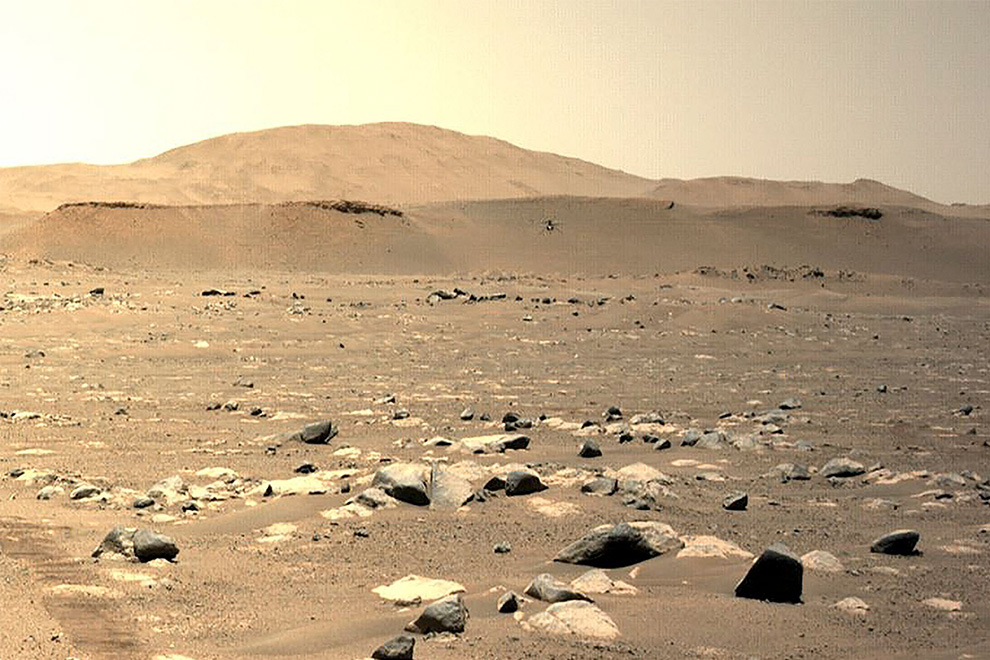
The Ingenuity Mars Helicopter hovers above the ground during its third flight on Sunday, as seen by the left Navigation Camera aboard NASA's Perseverance Mars Rover. JPL-CALTECH/NASA/AFP
NASA's mini helicopter Ingenuity on April 25 successfully completed its third flight on Mars, moving farther and faster than ever before, with a peak speed of 2m/s.
After two initial flights during which the craft hovered above the Red Planet's surface, the helicopter on this third flight covered 50m of distance, reaching the speed of 2m/s, or more than 7km/h in this latest flight.
"Today's flight was what we planned for, and yet it was nothing short of amazing," said Dave Lavery, the Ingenuity project's programme executive.
The Perseverance rover, which carried the 1.8kg rotorcraft to Mars, filmed the 80-second third flight. NASA on April 25 said video clips would be sent to Earth in the coming days.
The lateral flight was a test for the helicopter's autonomous navigation system, which completes the route according to information received beforehand.
"If Ingenuity flies too fast, the flight algorithm can't track surface features," NASA explained in a statement about the flight.
Ingenuity's flights are challenging because of conditions vastly different from Earth's – foremost among them a rarefied atmosphere that has less than one per cent the density of our own.
This means that Ingenuity's rotors, which span 1.2m, have to spin at 2,400 revolutions per minute to achieve lift – about five times more than a helicopter on Earth.
NASA announced it is now preparing for a fourth flight. Each flight is planned to be of increasing difficulty in order to push Ingenuity to its limits.
The Ingenuity experiment will end in one month in order to let Perseverance return to its main task – searching for signs of past microbial life on Mars.













